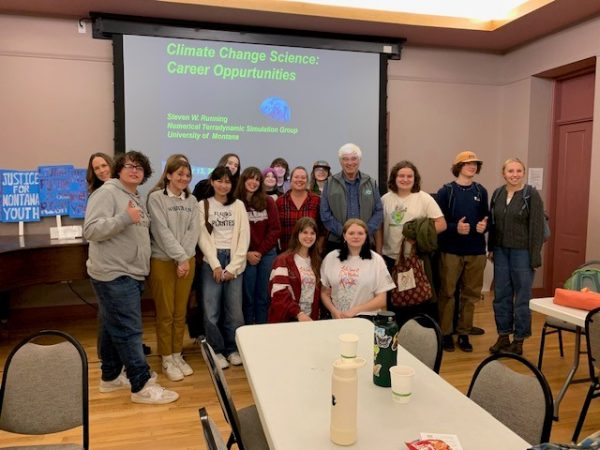The Seven Wonders of TRAPPIST-1
Newly Discovered Planets
March 21, 2017
On February 22, 2017, NASA held a press conference to announce ground-breaking findings made by the Spitzer Space telescope. In This Week @ NASA, a weekly video where they post their recent findings, NASA reported that the telescope discovered “7 Earth-sized planets around a tiny, relatively nearby, ultracool dwarf star.”
As of now, the planets are unnamed; however, they are being referred to as planets “b” through “h.” NASA states that planets “e,” “f,” and “g” are within the system’s habitable zone. This zone is “the region around the star in which liquid water is most likely to thrive on a rocky planet,” the video explained. Michio Kaku, a physics professor at the City University of New York and science and futurist contributor for CBS News, calls this “. . . the Goldilocks Zone. If a planet is too close to the sun, then the oceans boil away. If a planet is too far from the sun, the oceans freeze. [Planets] have to be just right from the sun to have liquid water.”
The Belgian astronomers originally discovered the system a few years ago with the TRAPPIST telescope, which is where both the star and the planetary system get their name, TRAPPIST-1, from. But the new discovery of three new planets was made by the Spitzer telescope. According to space.com, the system is around 40 light-years away in the Aquarius constellation.
Kaku also said they were able to locate these planets by looking for “periodic dimming.” He noted that “These planets can not be seen directly. However, when they go in front of the mother star, it dims the light from the mother star. We look for periodic dimming of stars, [which] is a characteristic of a planet moving in front of the star.”
To give perspective of this system’s size, the star that the planets revolve around is almost the size of Jupiter, reported the Helena Independent Record. “If Trappist-1 were our sun, all seven planets would be inside Mercury’s orbit.” Basically, it is just like our solar system but much smaller.
The next step for astronomers is “To look at the [planets’] atmosphere. We want to look for oxygen, water vapor… maybe even for radio transmissions,” Kaku reported.
Whether these planets can harbor life or not, this is still the biggest discovery in the quest to find life on other planets. Kaku highlighted the grandeur of this finding, saying ‘It’s bigger than Columbus’ discovery” that the Earth is not flat. Without knowing much more about this ‘earth-like’ system, it is now a waiting game to find out if their is potential for life on TRAPPIST-1.












